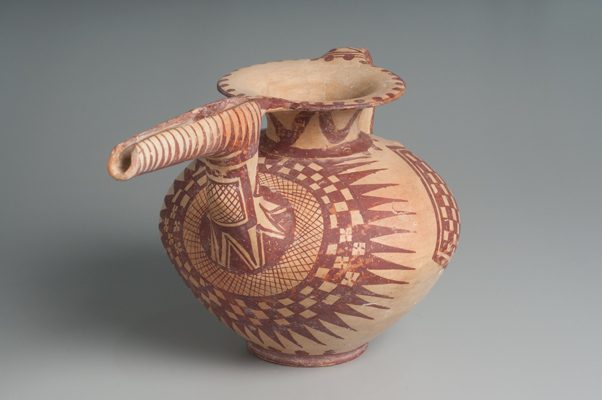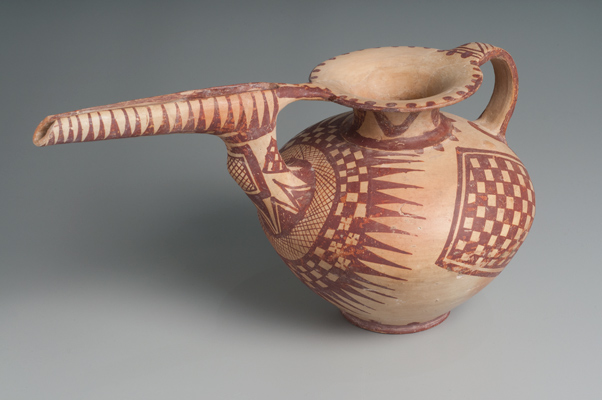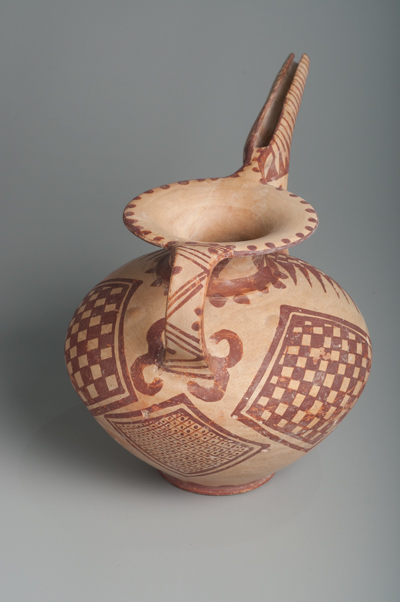How can we reconstruct the ideas and beliefs of people who lived thousands of years ago and did not leave any written sources? One way is to look at the art they created, and the context in which it was created and used. An unusual ancient ceramic pitcher in our collections provides a fascinating opportunity to do just that.
The body of the pitcher is shaped like a round jug with a short neck and a flaring mouth, but the spout is striking; it rises up from the side of the pitcher at a steep angle and then juts straight out about 15cm (roughly the length of a dollar bill). It seems impractical: the long spout would have made pouring difficult, and it would have been prone to breaking with frequent use. It also would have been harder to make than a simple spout on the pitcher’s rim. It was likely made in two or three separate pieces and then attached to the pitcher before it was fired in the kiln. We’re left to wonder, then, if the unusual shape of the spout served some other purpose.
The decoration painted on the pitcher’s surface is especially interesting. In addition to checkerboard patterns and other geometric features, it has a vivid sunburst design encircling the base of the spout. Together the shape of the spout and the sunburst design give the pitcher the appearance of a bird with a long beak, a crop in its neck, and wings on either side of its body.
Other pitchers of this sort have been found at a cemetery dating to the 9th–8th century BCE, close to the archaeological site of Sialk (near Kashan, Iran), a fortified hill town. The presence of these pitchers in the cemetery suggests that they were used in funerals, possibly to pour liquid offerings for the dead. The bird imagery further implies that birds played a significant role in the beliefs of the ancient inhabitants of Sialk, especially with regard to death. Perhaps, as in some ancient cultures, they believed that the soul left the body in the form of a bird. Or maybe these pitchers were made to resemble carrion birds, who scavenged food from dead bodies.
Pitchers with similar beak-like spouts have in fact been found at several sites in northwestern Iran. The objects have very different decorations, but they were almost all found in graves. This suggests that the burial practice involving these pitchers, and possibly the beliefs that informed their use, extended beyond Sialk, and that the people living there might have been part of a well-established regional network of social exchange and interaction.
With limited evidence available, it’s difficult to say anything definite about what the people of Sialk believed and practiced. Still, when considered in their broader context, objects such as this pitcher can give us important insights about the people who made them thousands of years ago.
Henry Colburn is a curatorial fellow in ancient art at the Harvard Art Museums.






